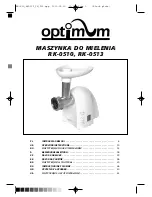
English |
19
Bosch Power Tools
1 609 929 N98 | (13.11.08)
Selecting the Sanding Sheet
Depending on the material to be worked and the required rate of material removal, different sanding
sheets are available:
Selection of the Sanding Plate
Depending on the application, the machine can
be equipped with sanding plates of different
hardness:
–
Soft sanding plate: Suitable for polishing and
sensitive sanding (also for curved surfaces).
–
Medium sanding plate: Suitable for all sand-
ing applications and general-purpose use.
–
Hard sanding plate: Suitable for high sanding
capacity on flat surfaces.
Replacing the Sanding Plate
(see figure B)
Note:
Replace a damaged sanding plate
8
imme-
diately.
Pull off the sanding sheet or polishing tool.
Completely unscrew the screw
10
and take off
the sanding plate
8
. Attach the new sanding
plate
8
and tighten the screw again.
Note:
When attaching the sanding plate, pay at-
tention that the toothing of the drive element
engage into the openings of the sanding plate.
Material
Application
Grain size
–
Paint
–
Varnish
–
Filling compound
–
Filler
For sanding off paint
coarse
40
60
For sanding primer (e. g., for removing brush
dashes, drops of paint and paint run)
medium
80
100
120
For final sanding of primers before coating
fine
180
400
–
All wooden materials
(e. g., hardwood, soft-
wood, chipboard,
building board)
–
Metal materials
For coarse-sanding, e. g. of rough, unplaned
beams and boards
coarse
40
60
For face sanding and planing small irregular-
ities
medium
80
100
120
For finish and fine sanding of wood
fine
180
240
320
400
–
Masonry, stone
–
Marble
–
Granite
–
Ceramic
–
Glass
–
Plexiglas
–
Automotive paint
–
Corian®
–
Varicor®
For pre-sanding
coarse
60
For shaping and braking edges
medium
80
100
120
For final sanding and forming
fine
180
240
320
400
For polish-sanding and rounding off edges
very fine
600
1200
OBJ_BUCH-424-002.book Page 19 Thursday, November 13, 2008 9:49 AM
















































